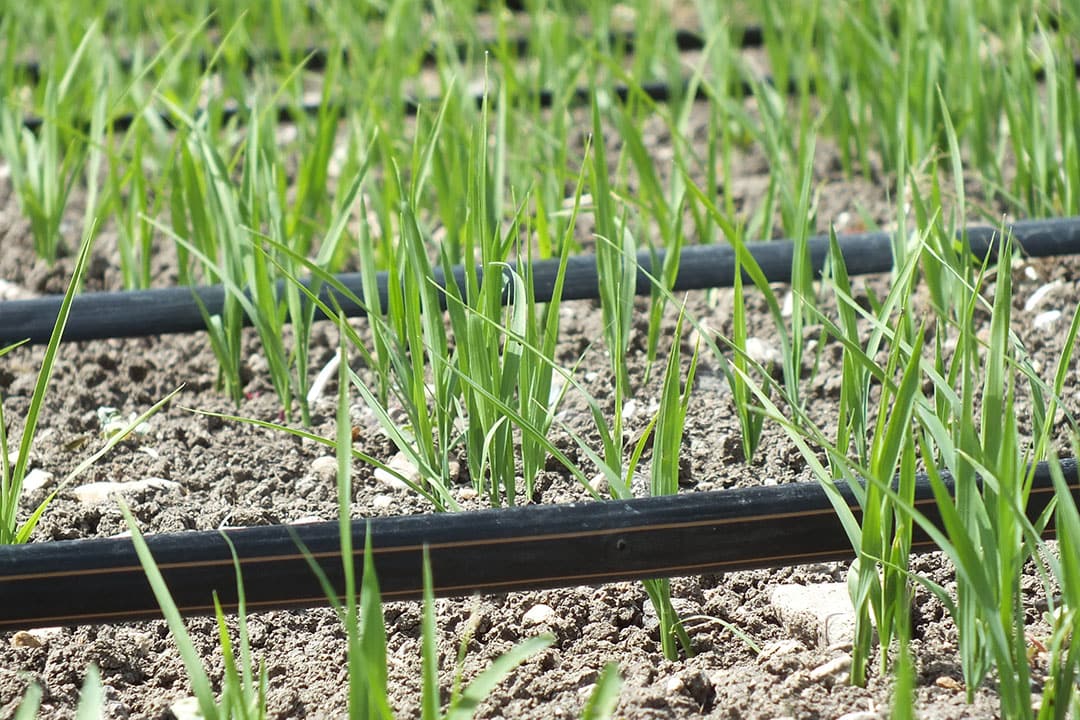Precision irrigation fundamental for stabilising global food security

Our entire food chain is reliant upon the availability of sufficient water to cultivate crops. Without water, our food supply dries up too. Whether crops are rain-dependent or get their water through flood, furrow or drip irrigation, the reality remains that human sustenance is entirely dependent on water.
While we are becoming more aware of the need for a sustainable source of clean water in our everyday lives, most people are unaware of the incredible inefficiencies of water-use in agriculture. Most of today’s irrigation is done through the same methods used thousands of years ago.
Flood or furrow irrigation
In fact, 70% of the world’s fresh water goes to agriculture of which an estimated 76% is used in flood or furrow irrigation. It is well known that flood and furrow irrigation operate with particularly poor efficiency of 60% or less. This means that 40% of the water applied in the field does not generate any impact on crop growth and the water is wasted through evaporation, percolation and run-off.
Increase water use efficiency with precision irrigation
Precision irrigation technologies such as drip irrigation, pioneered by Netafim in 1965, can immediately increase water use efficiency up to 90-95% while generating more yield for each drop of water. More recent technologies are reaching nearly 100% water-use efficiency by operating irrigation systems according to soil moisture and plant sensors, remote imagery and plant development algorithms.
This newer tech eliminates water waste and improves plant quality and yield. In places where water is scarce like the Middle East or California, these technologies are quickly gaining momentum.
Text continues underneath image

Climate change
While precision irrigation is the best way to use our water resources efficiently, still almost 80% of crops grown globally are reliant entirely on the rain. With climate change disrupting rain patterns, farmers and farming communities that are fully reliant on rain for their livelihoods face crises. The economic risks for farmers and farming-based economies also generates a fragile food system.
In India, 70% of rural households depend primarily on agriculture for their livelihood. Agriculture accounts for 23% of India’s GDP and employs 59% of the country’s total workforce (FAO data). What happens to rainfed crops when rain patterns change? In some cases farmers lose their entire yield and livelihoods because rain came only a few days late. And this is not only happening to smallholders in developing countries.
Text continues underneath image

Irrigation wielded as an economical tool
In the US, out of 32 million hectares of cornfields, only 11% are irrigated. Farmers of the remaining fields too often find themselves struggling with changing rain patterns and have lost their crop due to drought. This is where irrigation can be wielded as an economical tool to bring stability to farmers everywhere, bringing smart business, security, productivity and income.
Modernising irrigation is fundamental for stabilising global food security, freshwater availability and the economic stability of farmers. Sustainable agriculture depends on effective water management. If governments and local authorities want to secure the future of farming, they must invest in modern infrastructure and precision irrigation.



